| Lesson 9 | Applying audience analysis results |
| Objective | Use audience analysis results to create signs and metaphors. |
Applying Audience Analysis Results
A crucial piece of creating signs and metaphors is discovering user needs through audience analysis.
To make the results of your audience analysis useful in creating signs and metaphors, you will need to summarize and categorize the data.
This does not have to be a difficult or time-consuming task. The key is to determine what details and categories are relevant to your project.
Often audience analysis summaries use specific audience quotes to illustrate a trend or to back up a proposed approach.
Demographics and user groups
There are a number of ways to categorize and summarize results. One important factor to consider is audience demographics, which encompasses the characteristics of different audience member groups.
Some demographic characteristics to consider include:
Some demographic characteristics to consider include:
- Age range
- Cultural background
- Ethnicity
- Gender
- Sexual orientation
- Accessibility requirements
- Device compatibility requirements (such as a Braille reader)
Tailor metaphors to users
Each of these categories may have implications for the design of signs and metaphors.
For example, different age ranges may be attracted to different sign and metaphor strategies. A site that wants to use a dance metaphor for online community might use a rock and roll metaphor for
their teen or young adult audience, while swing or ballroom dance imagery might appeal to their older audience.
Additional technologies
Bear in mind that not all users perceive the world in the same ways using the same senses.
Audience members with varying degrees of physical abilities (vision, motor skills) will avail themselves of alternative devices and assistive technologies to make the Internet and the Web a useful place.
Designing for these audiences presents at once an enormous challenge and an instructive exercise in design.
Technological innovations
Consider that the newest devices on the market, wireless devices, have similar characteristics as many of these devices.
Small screens, limited interactivity, limited bandwidth, and rudimentary graphic capabilities. We must challenge ourselves to accommodate and support these audiences, whether they require specialized stylesheets,
assistive technologies, audio capabilities, or other elements. Good design requires that we design for everyone.
Design Choices to attract groups
The following SlideShow will show you screenshots of four different Web sites.
As you look at the site 's main page, analyze what design choices were made to accommodate and attract a specific user group. Click to the next panel and compare your analysis with our ideas.
As you look at the site 's main page, analyze what design choices were made to accommodate and attract a specific user group. Click to the next panel and compare your analysis with our ideas.
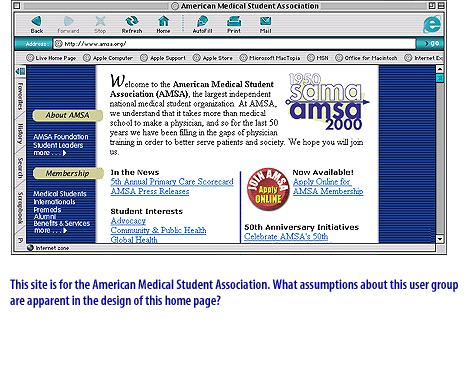
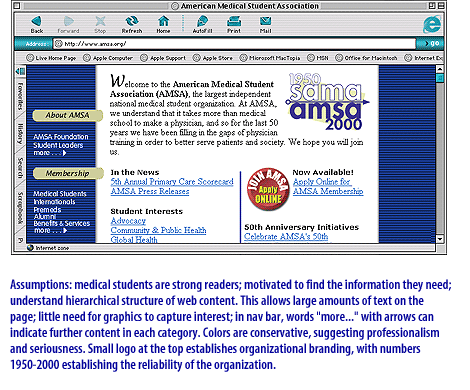
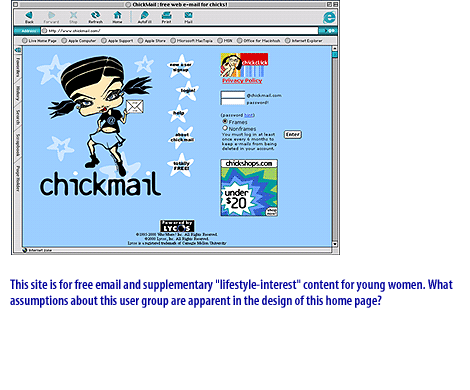
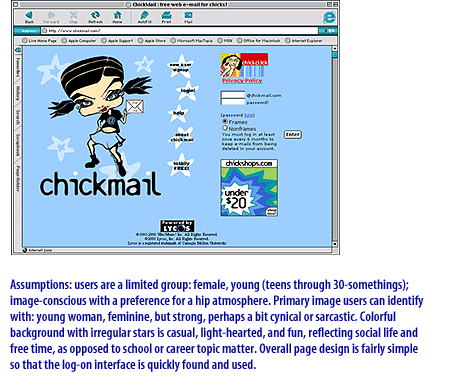
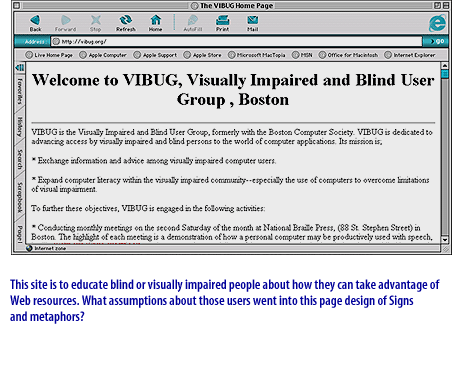
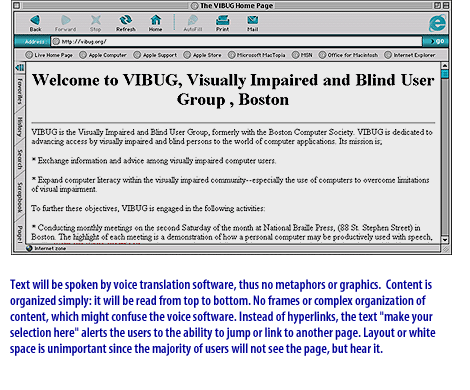
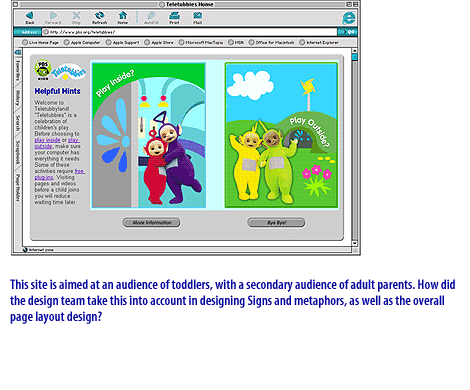
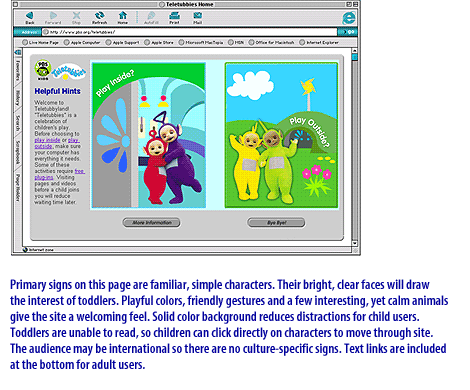




Applying Audience Analysis
Avoiding stereotypes
The benefit of having audience characteristic data is being able to spot patterns. On the other hand, a problem you should avoid is over-generalizing from the data. The danger in designing signs and metaphors for specific audience groups is stereotyping. While one or two representatives of a demographic group may confirm common stereotypes, this does not mean that their views are representative of everyone in the group.
People often react negatively when they feel they are being stereotyped. You may also alienate users who feel they are not being included by the tone or style of your site. You can avoid this trap by not defining your user group too narrowly.
People often react negatively when they feel they are being stereotyped. You may also alienate users who feel they are not being included by the tone or style of your site. You can avoid this trap by not defining your user group too narrowly.
In the next lesson, how user groups can guide decision-making about signs and metaphors will be discussed.
Now that you have seen a few examples of sites that have a clear demographic focus, open another browser window and see what other sites you can find that seem to be targeted at a specific demographic group.
Now that you have seen a few examples of sites that have a clear demographic focus, open another browser window and see what other sites you can find that seem to be targeted at a specific demographic group.